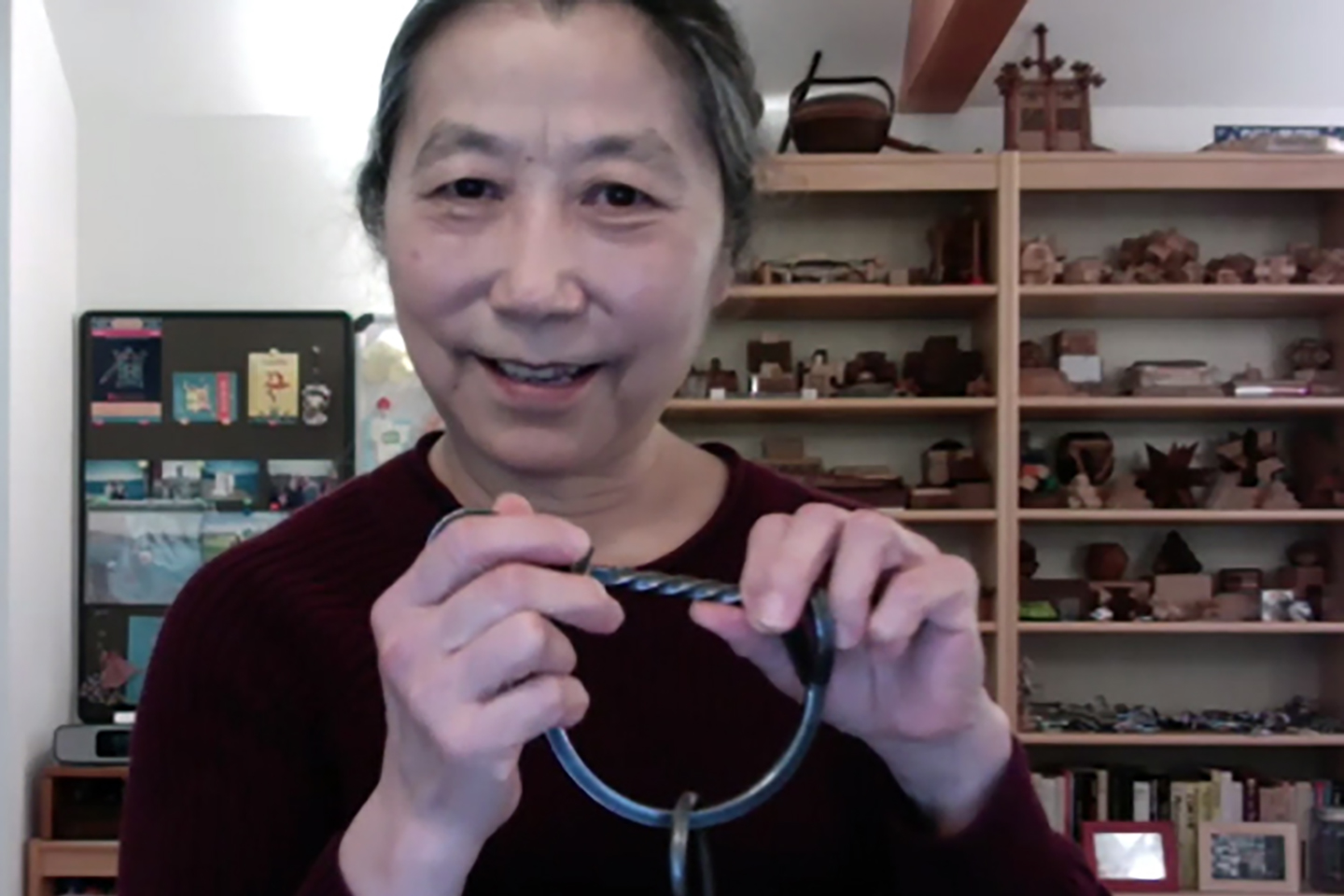
Wei Zhang, puzzle expert and connoisseur from Berkeley, California, visited the First-Year Learning Community, Tutmonda on Sept. 10, 2020. Zhang graciously showed examples from the Classical Chinese Puzzles collection – which she had amassed since the late 1990s with Peter Rasmussen. Many of the puzzles are beautiful artifacts, and fun to play with. But there’s much more to them! Zhang was able to demonstrate the complex nature of their construction, and the necessary linking of art, science, mathematics, and craftsmanship employed in their creation.
The most famous Chinese puzzle is the tangram, consisting of pieces in different shapes (triangle, square, parallelogram) that can be arranged in different ways to form images. “When the puzzle was invented, it wasn’t for kids,” Zhang explained. “It was invented as ‘frivolous creations’ by scholars who had too much free time on their hands.” A tangram set is known to have been brought to the United States in 1802, though the origin of the puzzle is earlier. Another tangram-like puzzle, consisting of 15 pieces, can be used to form more expressive images and Chinese characters.
Another well-known Chinese puzzle consists of a set of linked rings on a handle, and the object is to remove all the rings according to a set of rules. It is considered China’s greatest mechanical puzzle. Zhang demonstrated the solution to the nine linked ring puzzle, which takes 341 moves! The solution to the puzzle may be codified as a series of moves (where each ring is either “on” or “off” the handle) and written in reflected binary code, or Gray Code.
She also showed puzzle rings, which are finger rings consisting of four or more linked bands. Once disassembled, they are difficult to re-assemble. Zhang explained that these probably originated in the Middle East, and came to China via the Silk Road. The Chinese contribution to this puzzle is adding very elaborate ornamentation, which makes it harder to solve because of the physical constraints.
A perfect illustration of art meeting science, Zhang explained the siphon principle behind the “fairness cups.” These appear to the casual observer to be ordinary cups. They can be filled with liquid, which they hold until a “greedy” person fills them too high, and then the liquid pours out through a hole in the bottom of the cup.
Zhang also demonstrated other “puzzles” that had been developed for practical reasons, such as complex locking boxes used to hide documents.
Zhang explained that not all puzzles referred to as “Chinese” are actually from China. This includes puzzles that originated in another country, but have Chinese elements embedded in them. But also, she pointed out, during the late 18th and early 19th centuries, China was viewed as very mysterious and strange by many observers from the US or Europe – and consequently things that were odd or mysterious could be labeled as “Chinese.” So sometimes puzzles were labelled as “Chinese” as a marketing ploy!
Students responded enthusiastically to the presentation and marveled at the ingenuity of Chinese puzzle makers. Inspired by puzzle rings and bracelets, students proposed to join the Class of 2024 ring committee and design a ring puzzle Brass Rat!
